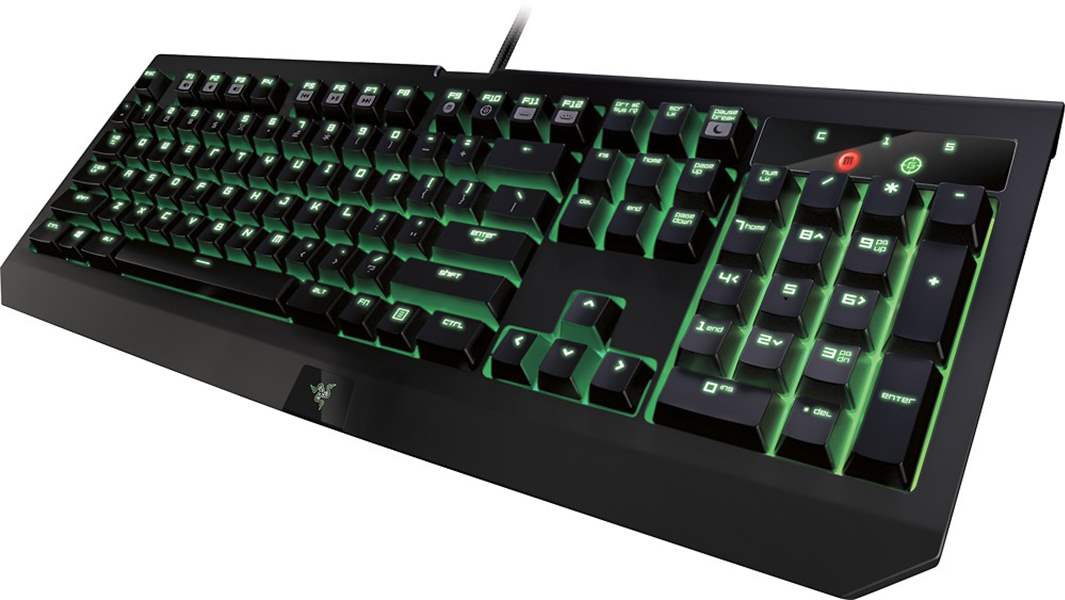
PEACH WEEKENDER | GAME ON
The key play: The right keyboard has become crucial for gamers
9/13/2017
The Razer Black Widow model 2016 features customizable backlit keys, a durability guarantee of 60 million keystrokes, and proprietary switches under each key that require little force to press, allowing for a faster recovery rate.
As someone with the handwriting and penmanship of a third-grader hyped up on Mountain Dew, I am eternally thankful for keyboards. The tactile sensation and physical process of writing by hand isn’t something I enjoy, and I’ve actually found joy in typing. Of course, it helps that I type over 130 words-per-minute.
I am biased, I supposed.
Keyboards have evolved over the past three decades to also become the game controller of choice for scores of gamers, myself included. There’s an accuracy and precision with the traditional mouse and keyboard configuration that the standard game controller has yet to come close to — despite the best efforts of companies like Valve and their much hyped but ultimately disappointing “Steam Controller.”
A reliable, durable keyboard is even more important as competitive genres such as MOBAs have gained popularity, as the difference between winning and losing can sometimes boil down to a few keystrokes. Make no mistake: If you expect to perform at a high level then precision hardware is needed.
Mechanical keyboards fill this need in the best ways, as they are more durable than the standard membrane-based keyboard while also being customizable. The difference is that mechanical keys contain a complete switch comprised of a base, spring, and stem under each key. Mechanical key failure won’t affect the rest of the board and can also be repaired and serviced with relative ease.
The other main advantage is that mechanical keyboards are tuned to require less force, meaning that a typist with speed can use less energy while typing. In gaming, this means there’s less time between keystrokes and more recovery between presses.
There’s also the telltale “click” of a mechanical keyboard key, as they are much louder than your standard keyboard.
I converted over to mechanical keyboards a few years ago and have not regretted the choice. That said, some may find themselves overwhelmed with the number of companies now in the mechanical keyboard game. A 2016 study by Future Market Insights says that the annual growth rate of mechanical keyboard adoption will increase to 70 percent by 2020, and that 40 percent of the market is for gaming.
Like many consumers, I stuck with Razer, a company and name I recognized for my first mechanical keyboard. Their Black Widow model 2016 (MSRP $109.99) features customizable backlit keys, a durability guarantee of 60 million keystrokes, and proprietary switches under each key that required little force to press, allowing for a faster recovery rate than I had ever experienced before.
That increase in sensitivity took some getting used to, as shooters such as Overwatch require a keen eye, as well as a finger or two waiting on the WASD keys. The main reason for owning a Razer device is the backlight customization, as Razer’s Chroma software suite allows you to sync colors and blinking patterns across all your connected devices.
After all: Can you play your best if your keyboard isn’t flashing purple in rhythm with your keystrokes? That’s not a world I want to live in.
The biggest flaw with the Black Widow were the ease of access to the keys and that the undercarriage is prone to getting filthy via food debris and dust. At one point I attempted to clean the keys, only to find the space bar rigged with a rubber-band that made putting the switch back together a Herculean effort.
I have since moved on to a new company and keyboard that’s attempting to provide a retro-looking device with a touch of class. The AZIO Retro Classic USB (MSRP $190.00) is easily the heaviest keyboard I have ever used, coming in at a whopping four pounds. The entire chassis is metal, genuine leather, and stiff plastic keys designed to feel and look like the keys of a typewriter.
This means that each key is more round than a traditional keyboard key, which could take some getting used to for typists and gamers. The keys are also heavier, which is great for gaming. I found myself hitting keys by mistake less often than I would with a more sensitive device, and more surface space allows even my rotund fingers to hit their mark.
The Retro Classic also features a backlight and customizable function keys, as well as adjustable feet underneath, allowing you to adjust the angle your wrist sits. As someone beginning to develop carpal tunnel, this feature is wonderful and welcome.
The weight of the keys have slowed my typing speed down, but as a gaming device the AZIO Retro Classic is a top performer that also might be the classiest-looking gaming peripheral I’ve ever owned.
When it comes to mechanical keyboards, the best advice is to find something comfortable to your style, Whether you’re a touch typist or someone pecking at keys, you deserve a superior controller for gaming and, at this point, I could never see myself going back.
That said: if someone could design a keyboard that automatically vacuums up chip crumbs and dust then I’d be forever grateful.
AZIO provided a review unit of the Retro Classic to The Blade for the purposes of this article.
Contact William Harrison at DoubleUHarrison@gmail.com or on Twitter @DoubleUHarrison.